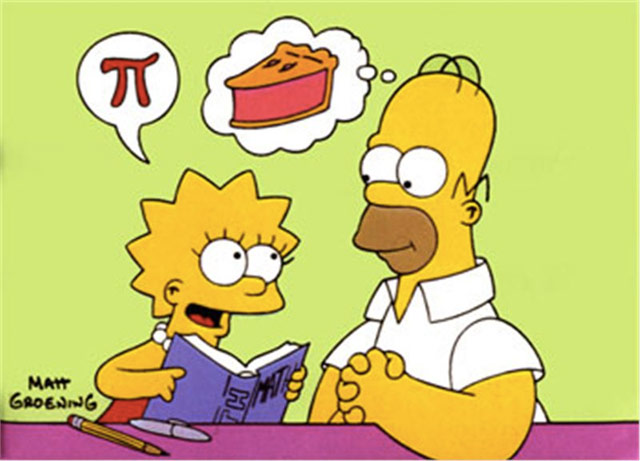The Simpsons and their mathematical secrets

Acclaimed science and math writer Simon Singh has written a book on the mathematics of The Simpsons, The Simpsons and Their Mathematical Secrets. Boing Boing has an excerpt.
The principles of rubber sheet geometry can be extended into three dimensions, which explains the quip that a topologist is someone who cannot tell the difference between a doughnut and a coffee cup. In other words, a coffee cup has just one hole, created by the handle, and a doughnut has just one hole, in its middle. Hence, a coffee cup made of a rubbery clay could be stretched and twisted into the shape of a doughnut. This makes them homeomorphic.
By contrast, a doughnut cannot be transformed into a sphere, because a sphere lacks any holes, and no amount of stretching, squeezing, and twisting can remove the hole that is integral to a doughnut. Indeed, it is a proven mathematical theorem that a doughnut is topologically distinct from a sphere. Nevertheless, Homer’s blackboard scribbling seems to achieve the impossible, because the diagrams show the successful transformation of a doughnut into a sphere. How?
Although cutting is forbidden in topology, Homer has decided that nibbling and biting are acceptable. After all, the initial object is a doughnut, so who could resist nibbling? Taking enough nibbles out of the doughnut turns it into a banana shape, which can then be reshaped into a sphere by standard stretching, squeezing, and twisting. Mainstream topologists might not be thrilled to see one of their cherished theorems going up in smoke, but a doughnut and a sphere are identical according to Homer’s personal rules of topology. Perhaps the correct term is not homeomorphic, but rather Homermorphic.





Stay Connected